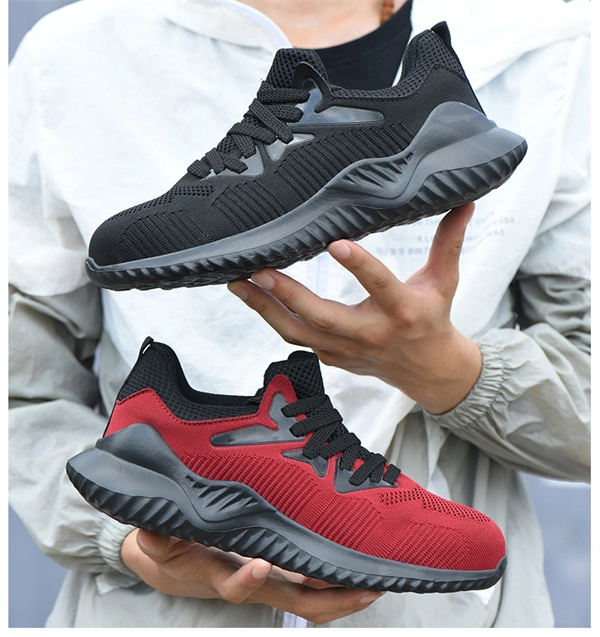
When Steel Toe Shoes Became My Workshop Heroes
The morning started like any other Tuesday in my garage workshop. The smell of sawdust hung in the air, my coffee was getting cold on the workbench, and I was focused on finishing a custom bookshelf for my daughter’s room. Little did I know that this ordinary day would transform into a powerful reminder about workshop safety that I’ll never forget.
The Incident That Changed Everything
I was maneuvering a heavy oak board when my grip slipped. In that heart-stopping moment, the massive piece of timber came crashing down directly toward my feet. Instead of the crushing pain I expected, I felt only a dull thud against my toes. My steel toe safety shoes had just saved me from what would have certainly been broken bones and months of recovery.
That near-miss made me realize how easily our workshop dreams can be shattered in a single moment of carelessness. It also made me appreciate the quality safety gear that had protected me. Those shoes weren’t just footwear—they were the unsung heroes that kept my woodworking passion alive.
Why Proper Safety Footwear Matters for DIYers
As hobbyists and DIY enthusiasts, we often focus on acquiring the perfect tools while overlooking what protects our most valuable assets—our bodies. After my close call, I researched extensively about workshop safety footwear and discovered features that truly matter when standing for hours while handling heavy materials.
The breathable mesh safety work shoes that saved my feet that day weren’t just protective—they were surprisingly comfortable. The lightweight design meant I could work longer without the foot fatigue I’d experienced with older, clunkier safety boots.
Game-Changing Features Worth Every Penny
After my accident, I became somewhat of a safety shoe evangelist among my workshop buddies. Here’s why these particular mesh steel toe shoes deserve a spot in every craftsperson’s gear collection:
🌬️ Breathable Honeycomb Mesh Upper
The honeycomb mesh design allows constant airflow around your feet. During those eight-hour weekend workshop sessions, this ventilation makes an enormous difference. No more peeling off sweat-soaked socks at the end of the day or dealing with the infamous “workshop boot stink” that used to make my wife banish my shoes to the garage.
🛡️ European Standard Steel Toe Protection
The built-in European standard steel toe cap is what saved my foot that day. It’s designed to withstand crushing forces and prevent rolling injuries when heavy objects strike. What impressed me most was how this serious protection came without the uncomfortable bulk I remembered from older safety shoes.
🔪 Kevlar Midsole Protection
Hidden within these shoes is a layer of Kevlar—the same material used in bulletproof vests. This flexible yet virtually impenetrable barrier prevents nails, screws, and other sharp objects from piercing through to your feet. I’ve stepped on enough dropped screws to appreciate this feature immensely.
👟 Comfort Features That Matter
The combination of shock-absorbing EVA soles and specialized insoles means you can actually forget you’re wearing safety shoes. The deodorizing, sweat-wicking insoles maintain freshness even during marathon project sessions, while the lightweight construction eliminates that heavy-footed feeling typical of traditional work boots.
My Workshop Journey Since That Day
Since my close call, I’ve completed dozens of projects without a single foot injury. The confidence that comes from proper protection has actually improved my craftsmanship—I’m less distracted by safety concerns and more focused on precision.
Last month, I hosted a workshop safety demonstration for my local makers’ club, where I shared my story and showed the actual shoes that saved my toes. Three members ordered similar safety shoes that same evening.
Finding Your Perfect Workshop Footwear
When selecting safety shoes for your workshop adventures, consider these crucial factors:
- Certification Standards: Look for shoes meeting ASTM F2413 or European EN ISO 20345 safety standards
- Weight Balance: The lighter the shoe while maintaining protection, the less fatigue you’ll experience
- Breathability: Especially important for long workshop sessions or warmer climates
- Comfort Features: Shock-absorbing soles and ergonomic insoles make a tremendous difference
- Sole Grip: Anti-slip properties prevent workshop accidents on sawdust or oil-spotted floors
The True Value of Protection
The day my steel toe shoes saved my feet, I realized something profound: the $80 I spent on quality safety footwear potentially saved me thousands in medical bills and months of recovery time. More importantly, they preserved my ability to continue creating with my hands.
As workshop enthusiasts, we invest in premium tools because we understand their value. Shouldn’t we apply that same logic to what protects our irreplaceable body parts?
Ready to Upgrade Your Workshop Safety?
If you’re still wearing regular sneakers in your workshop, consider this your gentle wake-up call. I waited until a near-disaster before upgrading my safety gear—you don’t need to make the same mistake.
These breathable mesh steel toe safety shoes with Kevlar protection offer workshop safety without sacrificing comfort. Your future projects (and toes) will thank you.
FAQ: Workshop Safety Footwear
How long do steel toe safety shoes typically last?
With regular workshop use (weekends and evenings), quality safety shoes should last 12-18 months before needing replacement. Look for worn tread patterns or compression in the cushioning as signs it’s time for new ones.
Are steel toe shoes uncomfortable for all-day wear?
Modern steel toe shoes with mesh uppers and EVA soles have eliminated most comfort issues. Today’s designs offer protection without the weight and stiffness of older models, making them comfortable for 8+ hour workshop sessions.
Can I wear steel toe shoes for other activities?
Absolutely! Many craftspeople wear their workshop safety shoes for yard work, home improvement projects, and even casual outings when comfort is a priority. The breathable mesh makes them suitable for various environments.
Do steel toe shoes set off metal detectors?
Some might, depending on the detector’s sensitivity. If you regularly pass through security checkpoints, consider composite toe alternatives that offer similar protection without metal components.
How should I clean mesh safety shoes?
Remove excess dirt with a soft brush, then hand wash with mild soap and warm water. Allow them to air dry completely before wearing again. Never machine wash or dry as this can damage protective elements.
Remember, the best workshop safety gear is the kind you’ll actually wear consistently. Investing in comfortable, effective protection isn’t just smart—it’s essential for turning workshop dreams into finished projects.
[Ready to protect your workshop dreams with proper safety footwear? Check out these breathable mesh steel toe options today! 👟👷♂️]
